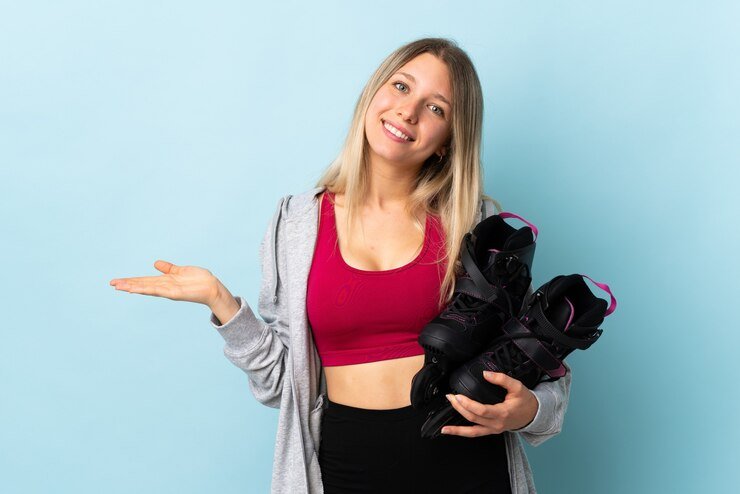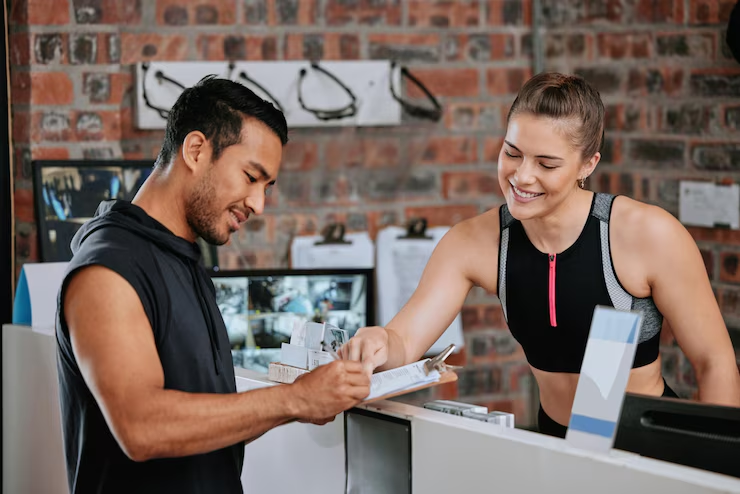Fitness gear is essential for anyone looking to achieve their fitness goals, whether it’s for working out at the gym, running outdoors, or engaging in home workouts. With the growing interest in health and wellness, the fitness equipment market is flooded with a vast range of products. However, not all fitness gear is created equal. Knowing what to look for when shopping for fitness gear is crucial to ensure you invest in quality products that will enhance your performance, improve safety, and offer durability for long-term use.
In this guide, we’ll explore key considerations to keep in mind when shopping for fitness gear, what to look for in quality products, and how to choose the right equipment based on your needs.
Understanding Your Fitness Needs

Before diving into specific products, it’s important to evaluate your fitness goals. Different types of workouts require different types of equipment. The first step is to understand your exercise routine and the types of exercises you plan to do. Whether you’re focusing on strength training, cardio, flexibility, or a combination of activities, your fitness gear should support your goals.
Types of Fitness Gear
There are several categories of fitness gear, each serving different purposes:
- Strength Training Equipment: Dumbbells, barbells, resistance bands, kettlebells, and machines.
- Cardio Equipment: Treadmills, stationary bikes, rowing machines, jump ropes, and elliptical trainers.
- Yoga and Flexibility Gear: Yoga mats, foam rollers, blocks, straps, and resistance bands.
- Footwear: Running shoes, cross-training shoes, weightlifting shoes, and specialized footwear for specific sports.
- Wearable Fitness Technology: Fitness trackers, smartwatches, and heart rate monitors.
- Recovery Tools: Massage guns, foam rollers, and stretching straps.
Your workout needs should guide your shopping choices. For example, if you’re focusing on cardio, investing in a good treadmill or stationary bike might be a priority. If strength training is your goal, high-quality dumbbells and resistance bands are essential. Similarly, yoga practitioners may need a non-slip mat, blocks, and straps.
Key Considerations When Shopping For Fitness Gear
1. Quality of Materials
When it comes to fitness gear, the material used is of paramount importance. Quality materials ensure that the products will last longer, perform better, and stand up to wear and tear. Here are a few material considerations to look for in common fitness products:
- Resistance Bands: Choose bands made from durable materials like latex or rubber. Higher-quality bands tend to be more stretch-resistant, and they maintain their elasticity over time.
- Dumbbells and Kettlebells: Look for high-quality steel or cast iron weights. If you prefer a coated finish, choose neoprene or vinyl for a more comfortable grip and less potential for damage to your floors.
- Yoga Mats: Opt for non-toxic, eco-friendly materials such as thermoplastic elastomer (TPE) or PVC. These materials are durable, easy to clean, and provide the necessary grip.
- Footwear: Shoes should be made from breathable, durable materials like mesh for ventilation and synthetic leather for sturdiness. The sole should offer a good grip while being flexible enough for different movements.
Investing in high-quality materials not only improves the functionality of the product but also ensures its longevity.
2. Comfort and Fit
Whether you’re purchasing clothing or footwear, comfort and fit are essential. Inadequate fit can lead to discomfort during your workouts, or worse, cause injury. For instance:
- Shoes: Ensure your shoes fit well, with enough room for your toes but snug around your heel and arch. Running shoes should offer cushioning, while weightlifting shoes should have a flat sole for stability.
- Apparel: Activewear should fit comfortably and allow for full range of motion. Materials like moisture-wicking fabrics (nylon, polyester, and spandex) can keep you dry and comfortable during intense workouts. Avoid clothing that’s too tight or too loose, as it can restrict movement or cause chafing.
- Wrist Straps, Gloves, and Supports: When using equipment like wrist straps or lifting gloves, ensure that they provide a secure fit without cutting off circulation. Adjustable straps are generally preferable to ensure a customizable fit.
The right fit can enhance comfort, performance, and injury prevention. When trying on shoes or apparel, consider the type of exercise you plan to do and how the gear will impact your performance.
3. Durability and Build Quality
Fitness gear is an investment, and it should be built to last. Durability ensures that your equipment will withstand frequent use and continue to perform at its best. Look for fitness products that have:
- Sturdy Construction: Whether you’re buying free weights, kettlebells, or machines, make sure they are well-constructed and can handle the stress they will endure during workouts. For example, gym equipment should have reinforced frames and solid welds to ensure stability.
- Rust-Resistant Materials: If you’re buying equipment that will be exposed to moisture, such as resistance bands or weights, check for rust-resistant finishes or materials.
- Warranty: Some high-quality fitness gear brands offer warranties on their products. A warranty is a good indication that the manufacturer believes in the durability and longevity of their gear.
Durability is a key factor in ensuring that your investment in fitness gear pays off over time, and it’s particularly important for heavy-duty equipment that will experience frequent usage.
4. Versatility
Versatile fitness gear can support multiple exercises, making it an excellent value for your money. For example:
- Resistance Bands: Can be used for strength training, mobility exercises, and stretching. They are also lightweight and portable, making them ideal for home workouts or travel.
- Adjustable Dumbbells: These allow you to change the weight, making them perfect for a variety of exercises, from lighter cardio to heavy strength training.
- Foam Rollers: Useful for muscle recovery, foam rolling can help relieve tightness and soreness in muscles after intense workouts.
When shopping for fitness gear, prioritize items that allow you to perform a variety of exercises, so you can maximize your workout efficiency and minimize the need to buy additional equipment.
5. Technology Integration
Technology has made its way into the fitness industry, providing users with advanced tools to track progress, monitor health, and improve performance. When shopping for fitness gear, consider the integration of technology:
- Wearables: Fitness trackers, smartwatches, and heart rate monitors can provide insights into your workouts, track your progress, and even monitor your sleep patterns. Popular devices like Fitbit, Garmin, and Apple Watch offer various features for athletes at different levels.
- Smart Equipment: Some machines like treadmills, stationary bikes, and rowing machines now come equipped with built-in screens that offer virtual classes, tracking capabilities, and performance stats.
Choosing fitness gear with technology integration can help you stay motivated and optimize your training.
How to Choose the Right Fitness Gear for Your Budget

Fitness gear can range from budget-friendly options to high-end, premium products. Here are some tips for choosing quality gear while staying within your budget:
- Prioritize Essential Equipment: Start by purchasing the most essential gear for your fitness routine, such as resistance bands, dumbbells, or a quality yoga mat. Once you’ve built up your collection, you can focus on investing in larger items like machines or specialized footwear.
- Look for Sales and Discounts: Many fitness equipment brands offer seasonal sales, promotions, or bundles. Look out for deals on websites or at local stores.
- Consider Long-Term Investment: High-quality equipment may be more expensive upfront, but it will save you money in the long run since it’s likely to last longer and perform better.
- Buy Multipurpose Gear: Choose versatile items like adjustable dumbbells or resistance bands that can be used for various exercises, maximizing their value.
Also Read : Shopping Tips For Scoring Discounts On Every Purchase
Conclusion
Shopping for fitness gear can be an overwhelming task due to the vast selection of products available. However, by considering key factors such as quality, comfort, durability, versatility, and technology integration, you can make informed choices that support your fitness goals. Prioritize the essentials and choose products that match your workout routine, ensuring that each piece of equipment enhances your performance and provides long-term value. Investing in high-quality fitness gear will not only improve your training but also keep you motivated and injury-free as you work toward your fitness aspirations.
Frequently Asked Questions (FAQs)
1. How do I know which fitness gear is best for my workout routine?
It depends on your fitness goals. For strength training, focus on equipment like dumbbells, kettlebells, and resistance bands. For cardio, look for machines like treadmills or stationary bikes. For flexibility or yoga, choose items like yoga mats, blocks, and straps.
2. Should I prioritize brand name when buying fitness gear?
While brand name can indicate quality, it’s more important to assess the product’s materials, durability, and reviews. Focus on these factors rather than relying solely on brand reputation.
3. Can I find good quality fitness gear on a budget?
Yes! Many budget-friendly brands offer high-quality equipment. Prioritize essential items like dumbbells, resistance bands, or a yoga mat, and buy multipurpose gear to maximize your budget.
4. How can I ensure my fitness gear lasts long?
Look for durable materials like steel, rubber, and eco-friendly options. Choose gear with warranties, and ensure proper care and maintenance (e.g., cleaning your equipment regularly and storing it properly).
5. Do I really need wearable fitness technology?
Wearable fitness technology can be useful for tracking your workouts, health metrics, and progress. However, it’s not a necessity for everyone. If you’re motivated by tracking your results and want more insights into your health, wearable tech is a great addition to your fitness routine.





